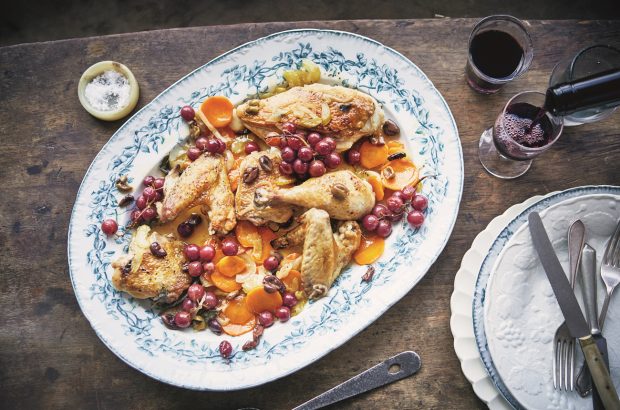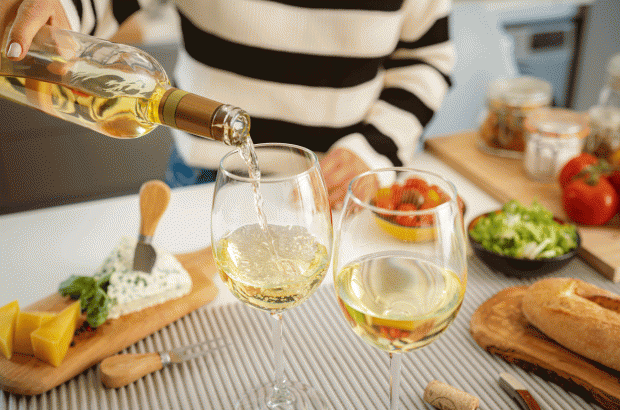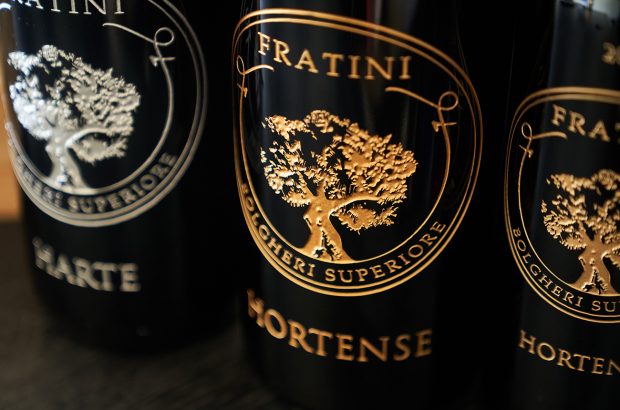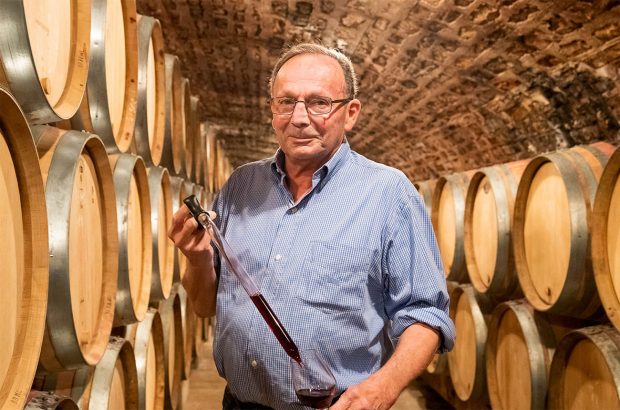Berlin
The market: There are many Christmas markets located all over Germany’s sprawling capital city – more than 70, in fact. The largest is in the old town of Spandau, lit by 1,000 fairy lights and complete with glassblowers; 25 November to 22 December.
Stay: Sir Savigny hotel, Charlottenburg, offers a sense of place with a sense of humour – press the ‘Butcher Bell’ in your room and you get straight through to the kitchen.
Long seen as the world capital of the underground, and still somewhere to which artists, musicians and writers flock, Berlin now has another face, one of tech start-ups and electronic music, stylish designer hotels and cutting-edge restaurants, with cuisines that span the world. But you do need to know where to go. ‘While there are lots of great restaurants in Berlin, there are many more terrible ones,’ warns Per Meurling, a Swedish former chef and now influential food and restaurant blogger based in the city. Meurling will point you in the right direction if you visit his website.
If you want to experience a little of that Berlin underground feel, albeit with classy wines and a stylish interior, then head to the Berlin-Mitte district to a wine bar called Freundschaft after 6pm, Tuesday to Saturday, where Johannes Schellhorn and Willi Schlögl will show you a good time. There’s great bar food, such as beef salad with Styrian pumpkin seed oil, creative cocktails and an impressive 500-bin list, 10% of which costs less than €50, with up to 20 wines always open on the bar.
Ring the doorbell at the nondescript frontage of Nobelhart & Schmutzig and an astonishing dining experience awaits. Executive chef Micha Schäfer serves up Berlin’s Cordo brutal lokal (‘brutally local’) cuisine in a 10-course menu prepared using products from the capital and its surroundings, while award- winning sommelier Billy Wagner recommends wines from a thrilling list, split into sections such as ‘fruit-driven’ and ‘terroir-driven’.
For more of contemporary Berlin, with Asian flavours, head to Mrs Robinson’s. Here Israel-born chef Ben Zviel turns out an exciting array of small plates to share, such as North Sea crab and tempura quail eggs, and grilled seabass and cabbage with a kimchi broth, paired with an equally interesting line-up of wines selected by co-owner Samina Raza.
At the southern tip of the Kreuzberg district you’ll find St Bartholomew, a gastropub run by Aussie chef Lee Thompson. Sit in the flickering candlelight and enjoy dishes such as burnt Jerusalem artichokes with aioli and Thompson’s signature buttermilk-fried chicken, washed down with wines from a reasonably priced, well-chosen list, particularly those sourced from Eastern Europe.
At Cordo you can pop in for a snack and a glass of wine, or the full eight courses of reasonably priced, imaginative cooking, with dishes such as hamburger red fruit jelly and corn-fed chicken ‘Cesar’. The wine list is packed full of great names from this part of the world, from Jurtschitsch and Pfifferling, to Pittnauer.
See also: Top vineyard stays by train
Lausanne
The market: The Swiss city comes alive with Bô Noël de Lausanne – actually three Christmas markets. Wine lovers should head to the arches of Grand-Pont and Bô Caveau, which are dedicated to wine; the perfect place to warm up with a ‘vin chaud’; 20 November to 31 December.
Stay: The Royal Savoy & Spa is a recently restored Art Nouveau treasure about halfway down the hill, where three-star Michelin rated Alsace chef Marc Haeberlin has a restaurant.
A winter city break in Lausanne, with its views of snowcapped mountains across glittering Lake Geneva, is hard to beat. But add Bô Noël de Lausanne, fondue and world-class wines into the mix and you’ve got the perfect Christmas break.
Lausanne recently became part of the Great Wine Capitals Global Network, joining nine other prestigious wine towns, including Bordeaux. It’s just a 10-minute train ride from the city to the heart of the Lavaux, the Vaud region’s UNESCO World Heritage site vineyard area, where briny Chasselas is the signature white grape and Pinot Noir the dominant red.
Next to Grandvaux train station you’ll find Auberge de la Gare, a locals’ favourite, where you can try wines from the surrounding vineyards and pair them with well-executed dishes such as supreme of guinea fowl with morels. Or settle for a superior cheese and meat platter at nearby Domaine Croix Duplex, with its classy range of wines.
Take things up a few notches at the smartest dining room in town, Anne-Sophie Pic at the iconic Beau-Rivage Palace. With its walnut-panelled elevators and celebrity guests, past and present, it’s reason enough to come to Lausanne. There’s a sizeable Swiss wine list, too.
For that ultimate Swiss delicacy, cheese fondue, head to Lausanne’s oldest restaurant, the wonderfully atmospheric Pinte Besson. Be sure not to forget to scrape up the crusty bits at the bottom, which the locals call ‘La Réligieuse’. To match, there’s a surprisingly comprehensive wine list, packed with local wines.
You’ll easily walk off the calorific local dishes on the city’s steep streets, so be sure to try ‘malakoff’, also called beignets de Vinzel (cheese fritters), at buzzy Brasserie de Montbenon. Located in the old casino, it offers views across lush gardens to the Alps beyond, and a well-chosen wine list.
Copenhagen
The market: There’s perhaps no other place in Denmark’s capital that commits to Christmas quite like the 175-year-old Tivoli Gardens, hung with an impressive 70,000 baubles and boasting 60-plus stalls; 17 November to 31 December.
Stay: Hotel 71 Nyhavn, an old warehouse on the harbour with views over the water, lovely rooms and Danish design to the core.
In 2010, when chef René Redzepi’s Noma knocked Ferran Adrià’s el Bulli off the top spot of the World’s 50 Best Restaurants list, everyone noticed. The world flocked to Copenhagen, which hitherto hadn’t been known for its imagination in the kitchen.
Jump forward a decade and Noma has a new home on Refshalevej island – and the city a thrilling food scene, littered with Noma alumni who have struck out on their own. Along with other like-minded souls, they have changed the city forever.
Read about its transformation in local food writer Trine Hahnemann’s passionate ode to the city, Copenhagen Food (£25, Quadrille), and then check out some of her favourite haunts, such as Ved Stranden 10. A visit here is like stepping into old Copenhagen and it’s a cosy spot in which to enjoy the quirky wine list packed with gems (Austria is a particular focus), and enjoy imaginative plates of food, such as Iberian pork, kimchi and greens.
The city’s oldest restaurant is Lumskebugten, now run by chef Erwin Lauterbach, who has transformed the way Danes eat vegetables, with exciting combinations such as ‘olive-fried’ string beans, marjoram, crisp potato and sweetbreads. The wine list is classical, with old-school service of the best kind.
It’s Christmas, so if that means a glass or three of Port, head to R vinbar, where you’ll also find a good selection of other European wines with which to wash down the uncomplicated bar food, from locally smoked salmon to charcuterie.
Just around the corner from Nyhavn’s Christmas Market, you’ll find cosy little Italian wine bar Nebbiolo, where you can enjoy a selection of antipasti alongside a good line-up of wines by the glass.
Fancy some really good Danish home cooking with a lovely glass of wine? Then pop in to see chef Denny Backer Vangsted at Omegn & Venner in the Torvehallerne food halls in central Copenhagen.
Strasbourg
The market: Held in the capital of Alsace, Christkindelsmärik is France’s oldest Christmas market, dating back to 1570, so it’s no surprise that the city considers itself the ‘Capital of Christmas’; 22 November to 30 December.
Stay: Hotel Cour du Corbeau on the banks of the river Ill is one of the oldest hotels in Europe, dating back to the 16th century, and certainly one of the most enchanting.
Old town Strasbourg, with its maze of narrow streets and alleys, half-timbered houses and sloping roofs, is straight out of a fairytale – perfect for a Christmassy getaway.
Recognised as a UNESCO World Heritage site, Strasbourg is so much more than the EU institutions that regularly grace our TV screens. It means choucroute garnie and flammekueche (also known as tarte flambée here), kugelhopf and pretzels – the ultimate comfort foods from the capital of Alsace.
And there’s Alsace wine, of course – one of the great, under-appreciated treasures of the wine world. Sample it in wine bars and winstubs, as distinct a part of Alsatian culture as the area’s dialect, and in Michelin-starred restaurants – there are seven of them.
Start with a visit to Géraud Bonnet’s new wine bar Un Cantalou à Strasbourg, which opened this summer in the heart of the city. Located on the pedestrianised Grand’Rue, it has pavement seating in summer as well as a stylish interior. It offers 190 Alsace crus, including 51 grands crus, with many bottles kept in wine dispensers that allow customers to sample measures by the glass from 20cl to 120cl. There are well-kept cheeses and freshly sliced meats to nibble on, and a light menu with dishes such as chicken avocado toast.
On Rue de Zurich, another newcomer to the Strasbourg wine bar scene is Le Purgatoire, housed in a 16th-century former chapel building. It is top Alsace wine producer Mélanie Pfister’s new favourite place, with a reasonably priced 150-bin wine list that cherry-picks the best of the region. There’s a daily-changing selection by the glass and equally affordable food to soak it all up, including bistro classics such as rabbit with mustard sauce and trout en papillote.
Top of the winstub institution list is Chez Yvonne, which was established in 1873 and offers classic cuisine in a traditional setting. Long- standing chef Dominique Radmacher turns out dishes such as pike perch with sauerkraut, and veal’s head with ravigote vinaigrette. Meanwhile Au Pont Corbeau, Christophe Andt’s similarly rustic eatery, serves arguably the best classic choucroute in town. Both offer wine lists that showcase the best Alsace producers, the latter boasting 13,000 bottles in the cellar.
Just 15 minutes by taxi from Strasbourg is Marlenheim village and Michelin-starred Le Cerf. For Alsace resident and Decanter contributor Sue Style, it’s a favourite spot. ‘It ticks all the Alsace boxes, including the wines,’ she says, recommending chef Michel Husser’s contemporary twist on choucroute, with suckling pig and foie gras.
See also: Ten top Alsace restaurants
Vienna
The market: Christmas markets here date back to the Middle Ages and today there are over 20 of them, including Viennese Dream, held in front of the city hall; 17 November to 26 December.
Stay: Hotel Rathaus Wein & Design is a boutique hotel near the vibrant Museums Quarter, offering generously sized, wine producer-themed rooms and a stunning breakfast.
Vienna boasts the biggest urban vineyard region in the world, with almost 300 producers working nearly 600ha of vineyards all within sight of the Stephansdom, Vienna’s cathedral. Vines were growing within the city walls in what is today’s 1st district right up until the late Middle Ages.
Regularly winning the title World’s Most Liveable City, the Austrian capital boasts some exciting young chefs who are looking far beyond dumplings. One such is Konstantin Filippou, holder of two Michelin stars, who offers upmarket small-plate dining at his second restaurant, O boufés, where passionate sommeliers present one thrilling Austrian wine after another.
Fabian Günzel is a rising star on the Viennese scene. At his restaurant Aend he offers a purist approach – with dishes such as foie gras and hondashi or cauliflower and caviar – and a focus on meticulously sourced food and wine. Smart food, at smart prices.
No gastronomic visit to Vienna is complete without a trip to eat Heinz Reitbauer’s food at Steirereck. This two-star Michelin institution, relocated to its futuristic home in the Stadtpark, offers modern Austrian food, including the resurrection of some long-forgotten classics, and a vast wine list.
For something more casual, head to Wein & Co, a nationwide chain of superior wine shop-cum-wine bars where you can drop in for a glass of Vienna’s USP gemischter satz – made from various white grape varieties planted, harvested and fermented all together – or explore Austria’s fascinating wine regions, glass by glass. There is also a daily-changing menu of bar food, such as flammkuchen (a type of local pizza).
Fritz Wieninger is credited with putting gemischter satz on the map globally and makes some of the best wines in region. His excellent heuriger (wine bistro) is in a prime vineyard area on the Nussberg, just 20 minutes’ drive from the Stephansdom. Choose dishes such as fillet of pike perch with pumpkin, pepper, cabbage and potato-and-bacon pancakes.
See also: Top restaurants and wine bars in Vienna















